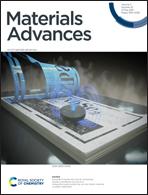Recent progress in materials development for CO2 conversion: issues and challenges
Abstract
Increasing levels of CO2 emissions from our lifestyles impart a detrimental effect on human lives. To diminish the adverse effect of excessive CO2 in the atmosphere, porous architectures with inimitable microstructural features have been developed for the purposes of capture and storage. However, a critical element for ecological balance is reducing waste. This has further encouraged the research community to utilise captured CO2, since it is a cheap industrial waste. In this review, we have illustrated the development of strategies for CO2 utilization with an emphasis on CO2 capture, particularly highlighting the production of valuable chemicals. Numerous approaches have been elicited for the conversion of CO2 into value-added chemicals, such as cyclic carbonates, alcohols, dimethyl ether, olefins, aromatics and many more. For such aforementioned conversions, research interest has covered metal oxides (silica, zeolite, alumina and transition metal oxide), porous polymers, metal organic frameworks (MOFs), zeolitic imidazolate frameworks (ZIFs) and carbonaceous materials together with several metal NPs (NP). The most conventional state-of-the art strategy is immobilizing metallic or metal oxide NPs over porous networks, employing it as a catalyst for the production of agrochemicals, pharmaceuticals and fuels. The performance of the catalysts can be precisely tuned by morphological selectivity, surface area, thermal stability, elemental composition, mechanical inertness, ultra-fine porosity, etc. The efficiency of the catalyst has been further improved on the basis of yield of product, selectivity and reusability. This review demonstrates the latest tactics to fabricate different types of catalyst for CO2 fixation in order to achieve valuable chemicals with efficacy reaching towards commercial demand. In addition, future considerations to fabricate heterogeneous catalysts with microstructural diversity comprising potential active sites, are discussed, keeping an eye on the probable challenges in the context of transformation of CO2 to the value-added products.



 Please wait while we load your content...
Please wait while we load your content...